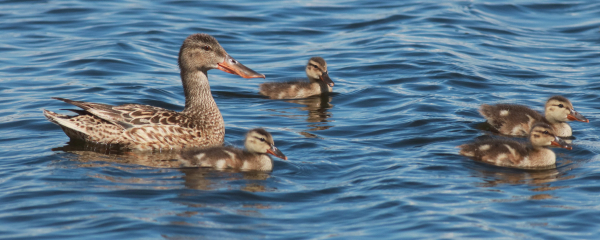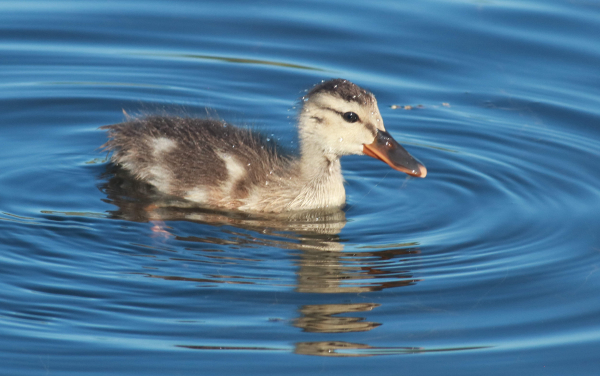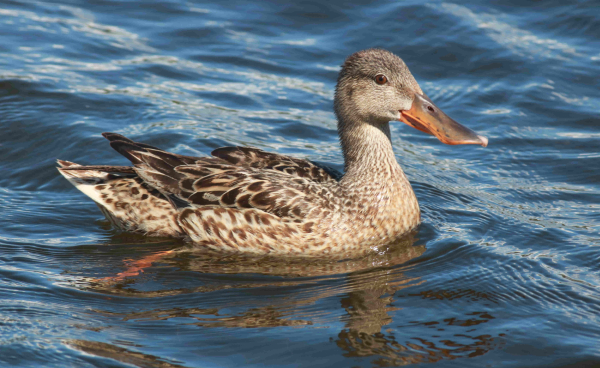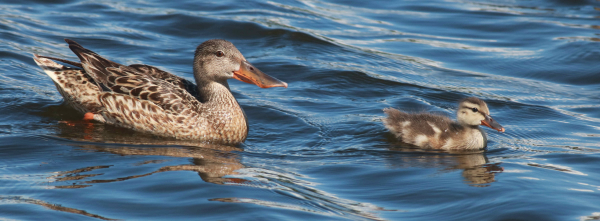Periodically I’ve shared how the best photo opportunities often transpire when you encounter a very trusting individual that allows a relatively close approach, and permits you to share some time with it as you photograph. I call these birds “species ambassadors,” for providing the chance to photograph them – and share the photos with other people. By sharing the photos of “ambassadors,” with birders, family, friends, co-workers, social media contacts, and others we can share some interesting information about the birds, their biology, and behavior – and our enthusiasm for birding and birds.

When you encounter a species ambassador, it quickly becomes apparent, and I dare say you feel a real connection with the bird. Last week, I thoroughly enjoyed an interaction with an ambassador, so want to share the experience along with things to keep in mind so you can make the most of such an interaction. Not only are ambassador episodes personally gratifying, they also provide great opportunities to change and improve your photo options and technical settings.
As you know, I’ve been taking advantage of any opportunities I get to photograph ducks with broods as this duck-rich region is nearing peak duck brood hatching. But last Wednesday I enjoyed and appreciated the chance to photograph a true duck ambassador – a female Northern Shoveler. Her brood of seven ducklings were equally important ambassadors, but like all ducklings, they followed the hen’s lead, and that’s what it came down to ultimately – the hen’s trust. I’ve already encountered more than 100 duck broods this season, but I’ve only found 2 ambassadors – this shoveler and, to a lesser extent, the Canvasback with four ducklings.

The Find and The Action
As I turned onto a side road at a very productive duck brood photo location east of Bismarck, I immediately caught the silhouette of a duck standing on the shore of the pond with a few ducklings at its feet. Initially, the hen looked like a teal, but I immediately stopped a distance away to wait for the shadow of a small cloud to pass. With the area still in the cloud’s shade, the hen and brood took to the water, revealing they were Northern Shovelers. It was nice to see that instead of vacating the area, or swimming farther into the pond, the brood turned my way with the female in their midst.
Even in the cover of the clouds, I took a couple documentary photos, but mostly just enjoyed the slow but steady advance of the foraging ducklings. The hen remained unconcerned with my mobile blind – but c’mon sun. By the time the brood was literally outside my window, the cloud passed and the light was perfect to photograph the brood. It was especially rewarding to have the ducklings so close, and they were oblivious to both the van and my camera. I photographed as they passed by, turned and passed back my way – woo-woo!
The brood was a little too close and a little too spread out to fit all the ducklings into the frame with the hen, but after taking the first couple photos I quickly changed my aperture from f8 to f10 to increase the area in focus to get more of the brood in focus. The ducklings were so relaxed that they spread out as they searched for food, making it harder to keep them all in the photo frame, and to keep them in focus. Therefore, I decided to emphasize taking photos of individual ducklings, and I was able to take the best close portraits of individual ducklings, as well as intimate portraits of the hen that nearly filled the frame. I particularly appreciated the trusting nature of the female and the chance to take photos that showed the subtle colors of individual feathers, the sharpness of her eyes, and the flaring form of her large spatulate bill.

A critical point came when the brood passed by me the second time. Now, I wanted to follow their lead, which would require me to test their trust a bit more. I held my breath, turned the key, and started my vehicle – no reaction from the ducks – then moved forward about 20 feet. I turned off the vehicle, raised my camera to the window opening, and not a duck blinked an eye in response, so I resumed photographing as they continued to forage atop the shallow water, occasionally dunking their heads below water to grab food.
I have many photos of shovelers, but I knew this hen was exceptional – a true ambassador – and that I should make the most of photographing her and her ducklings. For now, I took all the photos I wished, then left the shovelers on their own with the idea of returning later. This first photo episode was earlier in the afternoon than I usually photograph, so I moved on with the hope of a second photo period a couple hours later.
Timing, Lighting, Color
I photographed the shoveler brood twice, once about 4:00pm and another time about 6:30. In essence, I had to return to take advantage of the opportunity the female shoveler ambassador provided – if they were still there. The biggest change between the two photo sessions was the lower direction of the light and its effects on the color of the water, and to a lesser extent on the colors of the birds. The wind was a lesser factor as it calmed from a light breeze to no wind during the second session. The resulting photos were especially pleasing with the calm water colored a beautiful deep blue, providing a perfect setting.
I was glad to re-find the shovelers in the same location, and they acted in much the same manner. This time, I took more close portraits of the female, and a couple of the feeding ducklings. After a few minutes, the female was so relaxed with my re-appearance that she began bathing and preening quite actively as the ducklings foraged. Soon, the ducklings bunched together loosely, watching the hen’s antics, and in a few moments the little ones relaxed into siesta mode on the tranquil water.

In Retrospect
Even with so much time in the company of the shovelers, I must point out that I made a big mistake while photographing them: In retrospect, after seeing the resulting series of photos, I should have switched to my zoom lens, at least for some photos. I was so close to the brood that I couldn’t fit them all in the frame, but with a zoom lens, I could have zoomed “out” to a wider angle view to include all the ducklings with the hen.
I also could have – “could-a, would-a, should-a” – heck, I managed a nice collection of photos of the 8 ducks, and I have plenty of other photos of shoveler broods in a variety of ages in which all the ducklings are in focus within the frame – ‘cuz they were not very close, frankly. This was a different opportunity, and I’m happy with the outcome. But for instruction’s sake, it’s worth considering what more I could have done – and being prepared for “next time.”
Obviously, I will check back on the Northern Shoveler ambassadors weekly, especially since this has been the second best photo location lately, after McKenzie Slough. This wetland provided views of a Mallard brood, a Blue-winged Teal, 2 Canvasback broods, and a Hooded Merganser brood last Wednesday, but there were more broods I did not see, I’m sure, making it a duck brood hotspot for sure. Even so, I wasn’t able to get anything more than long-range documentary photos of other broods – making the shovelers all the more unique.

It was a simple joy to spend time with such trusting and accommodating ambassadors, and I look forward to seeing them again next week, camera in hand. You can’t pick your ambassadors, they kind of pick you when you approach them your camera. When they do show you favor, savor that time and take some of the best photos of your year.
Article and photographs by Paul Konrad
Share your bird photographs and birding experiences at editorstbw2@gmail.com